What Is The Oldest City In The World
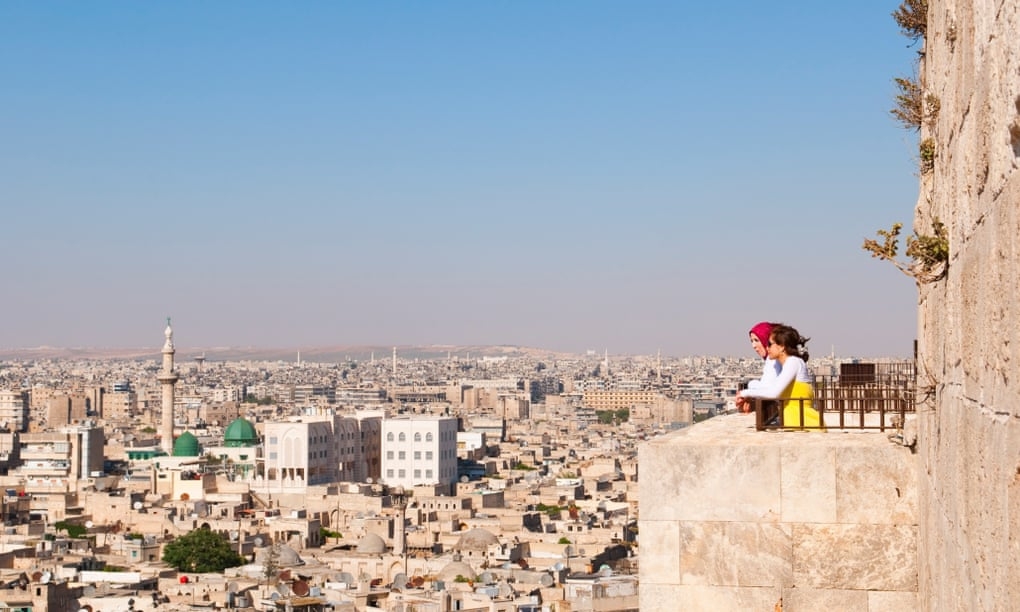 |
| Oldest city in the world - Photograph: Joel Carillet/Getty |
Which city is the oldest in the world?
Scholars have long argued over which city is the world's oldest. But the loss of archaeological evidence to time and destruction and the imprecise nature of dating ancient artifacts makes tracing a city to its founding challenging. Add to that, as The Guardian notes, scholars must wrestle with tough questions such as when a settlement becomes a city. Some argue that transition happens when a place establishes trade, while others tie it to the development of plumbing.
Arguably, Aleppo is considered the oldest city in the world. Written records show that Aleppo was an important city long before Damascus. It is really only since the opening of the Suez Canal that Aleppo has declined as a major trading city. Until the recent civil war, there had been serious efforts to preserve the citadel, which dates back to the first century BC, as well as Aleppo’s mosques and its medieval hammams and souks. All that has now gone up in smoke, and Aleppo’s old city is so much rubble and ruin. It may be impossible to say with any certainty what is the world’s oldest city – for a very old argument, it is remarkably fluid, with new discoveries all the time – but for now it seems only right to give it to Aleppo, the oldest city currently being fought for and sacked, as all these cities have from the beginning.
Where is Aleppo?
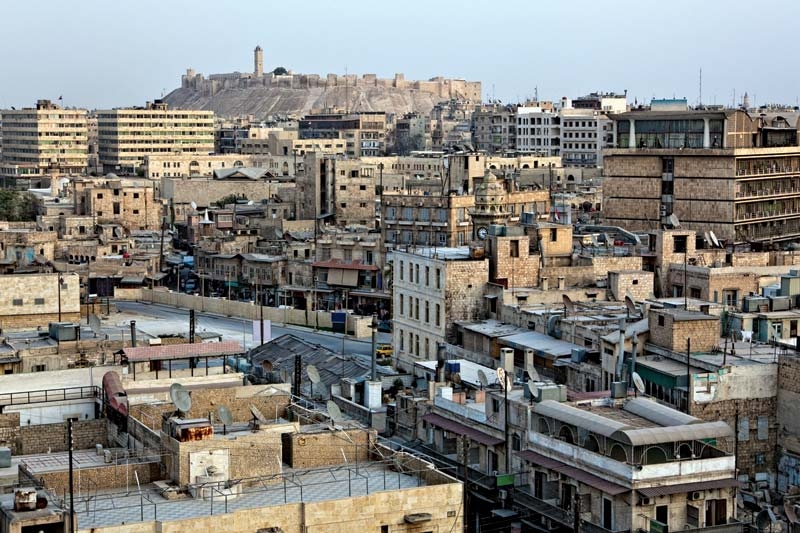 |
| The city of Aleppo, Syria, with the medieval citadel in the background. © OPIS/Shutterstock.com |
Aleppo, Arabic Ḥalab, Turkish Halep, principal city of northern Syria. It is situated in the northwestern part of the country, about 30 miles (50 km) south of the Turkish border. Aleppo is located at the crossroads of great commercial routes and lies some 60 miles (100 km) from both the Mediterranean Sea (west) and the Euphrates River (east).
History of Aleppo: A great world city being destroyed by war
The exact age of Aleppo is unknown, although it is thought to be among the world’s oldest continuously inhabited cities. The first settlers are believed to have built homes on the hill at the centre of the modern city, taking advantage of the area’s natural defensive advantages, fertile agricultural land, and proximity to a water source, the Quwayq River. However, the continuous occupation of the site to the present day has made the search for archaeological evidence of the site’s earliest history difficult.
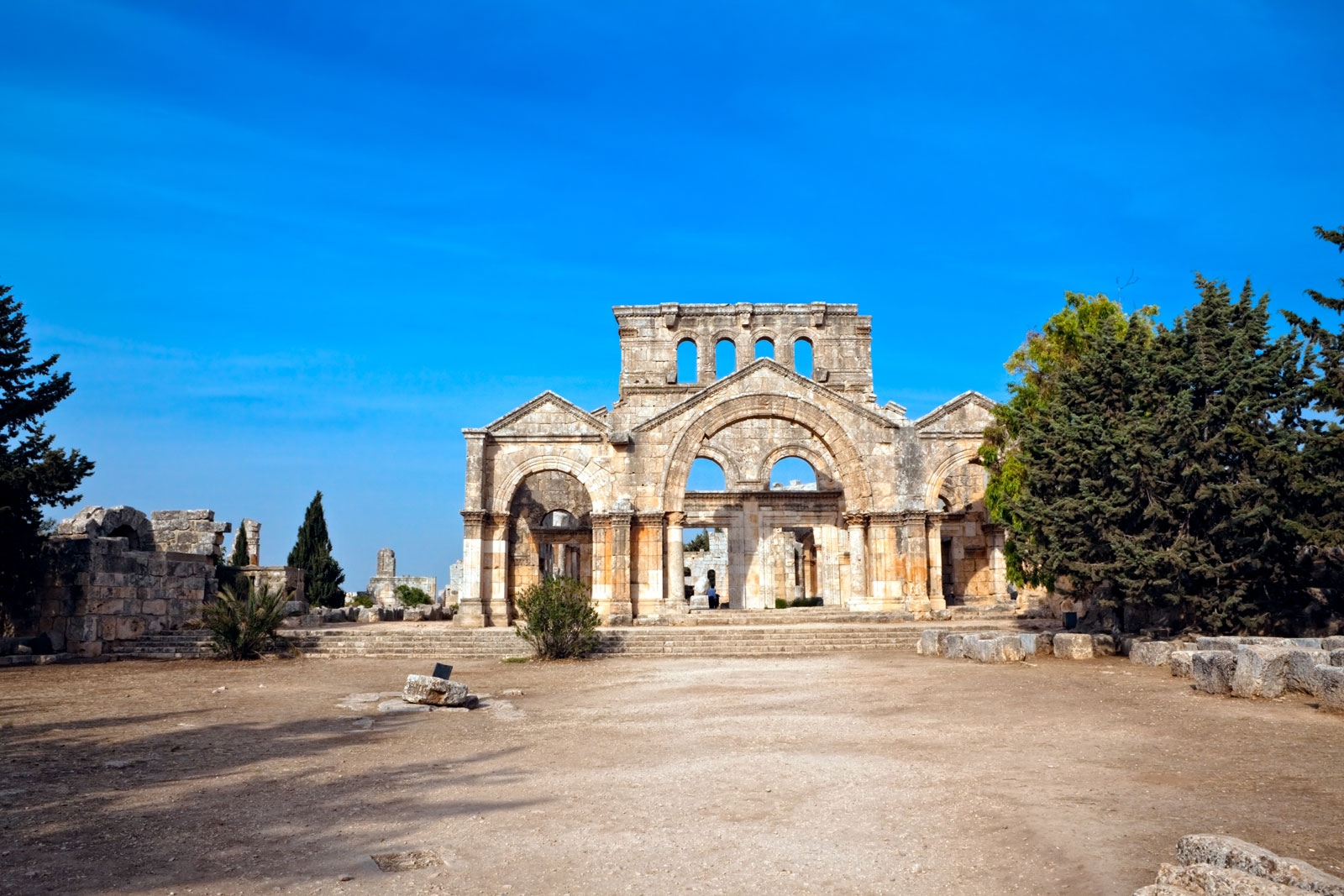 |
| South facade of the martyrium at Qalʿat al-Simʿān near Aleppo, Syria. © Dbajurin/Dreamstime.com |
From its early origins, Aleppo was a place where people grew wealthy. Cuneiform tablets from roughly four thousand years ago tell of a settlement called ‘Halabu’ — eventually Aleppo — that was even then a center for the manufacture of garments and cloth. Located not far from the Mediterranean Sea on one side and the river valley of the mighty Tigris and Euphrates on the other, the city found itself in the middle of ancient Egyptian and Hittite trade routes. The Seleucids, a Greek dynasty descended from one of the lieutenants of Alexander the Great, developed the area further, while certain colonnaded avenues and courtyard homes in Aleppo today bear the tell-tale signs of Roman craftsmanship and Hellenistic urban planning.
Following the advent of Islam and into the medieval era, Aleppo became a hub of the Silk Road, a giant entrepot pooling in all the riches of China and India for buyers further west, north and south. Aleppo’s many caravanserais and bath houses bubbled with the chatter of different tongues; by the 16th century, numerous European merchant houses had set up shop to try to get a piece of the action. When one of the witches in Shakespeare’s Macbeth speaks of a sailor’s wife — “Her husband’s to Aleppo gone, master o’ th’ Tiger” — the English audience at the time would have been aware of that faraway city’s allure and majesty.
Aleppo’s many-layered past and cosmopolitan identity is chiseled into its very architecture. The city’s Great Mosque and Citadel — a towering edifice on a hilltop at the heart of Aleppo — were statements of medieval Turco-Arab might erected atop earlier Roman and Byzantine structures. Well into the 20th century, the city remained home to a diverse mix of faiths and denominations. It always had a prominent, flourishing Jewish community — which, for some six centuries, zealously guarded one of the most famous and venerated copies of the Hebrew Bible, now known as the Aleppo Codex. In the city’s outskirts, sits the Church of St. Simeon, a 5th century Byzantine ruin built around the supposed site where Simeon, an ascetic Christian saint, perched himself atop a pillar for 37 years, choosing, as the 18th century British historian Edward Gibbon put it, “the celestial life.”
But while Aleppo’s history was so indelibly shaped by this intermingling of cultures, it was a hardly a bastion of peace. The city was on the frontlines of the Crusades, ever threatened by Frankish crusader mini-states further to the west.
Aleppo endured, and would go on to be ruled for nearly four centuries under the suzerainty of the Ottoman empire and later, in the early 20th century, by French imperial mandate. It remained a busy mercantile center. In his famed guidebook to the Middle East, 19th century European traveler Karl Baedeker frowned on the city’s petit bourgeois character: “The Aleppines do not enjoy a very high reputation and the expression ‘the Aleppine is a coxcomb’ is proverbial.”
French colonial administrators attempted to solidify their control and counter nascent Syrian nationalism by playing the territory’s major centers — Aleppo, Damascus and what was then known as the Alawite state — against each other. That legacy of gerrymandering and divisive rule, while a failure, has had a lasting effect: it can be seen in the contemporary politics of Syria and much of the region — the vicious sectarianism, the delicately forged (and oft-cynical) alliances linking interest groups and whole communities to the regime in power.
Interesting facts about Aleppo
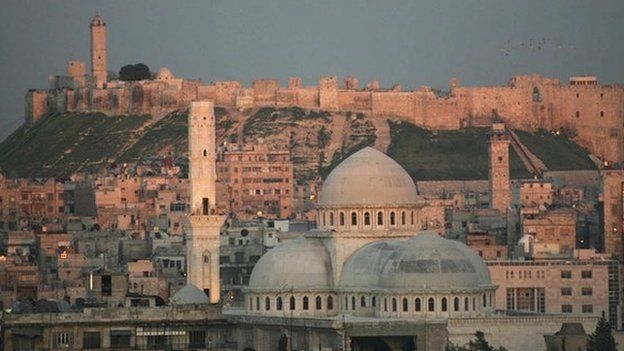 |
| Photo: BBC |
1. The fall of the city of Aleppo on December 13, 2016 was five years in the making. The city was the battleground between government forces of Syrian President Bashar al-Assad (who held the western end of Aleppo) and rebel forces (who occupied the eastern end).
2. The roots of Aleppo’s Jewish community date to antiquity, and Aleppo was for centuries an important centre of Jewish culture.
3. The battle in Aleppo is part of the on-going Syrian civil war that resulted in thousands of refugees fleeing out of Syria and into the Middle East and Europe. The war came about as Assad cracked down on the country’s pro-democracy movements as a result of the Arab uprisings in 2011.
4. The city of Aleppo is one of the oldest cities in history, its Old City added to the list of UNESCO World Heritage sites in 1986. Before the war, Aleppo was Syria’s biggest city and its financial centre. The city was besieged when it was occupied by the rebels in 2012.
5. There was a large earthquake near Aleppo in 1138.
6. Aleppo’s main industries are silk weaving, cotton printing, the manufacture of soaps and dyes, and the preparation of hides, wool, dried fruit, and nuts. The city is a market centre for the surrounding agricultural area, which produces wheat, cotton, barley, vegetables, fruit, nuts, and sesame.
7. Aleppo remains a centre of traditional Arab poetry, music, cuisine, and handicrafts.
POPULATIONAleppo was home to more than 2 million people before the war. Today between 250,000 and 300,000 are estimated to live in rebel-held areas. The government-held side of the city is still home to more than 1 million people. |
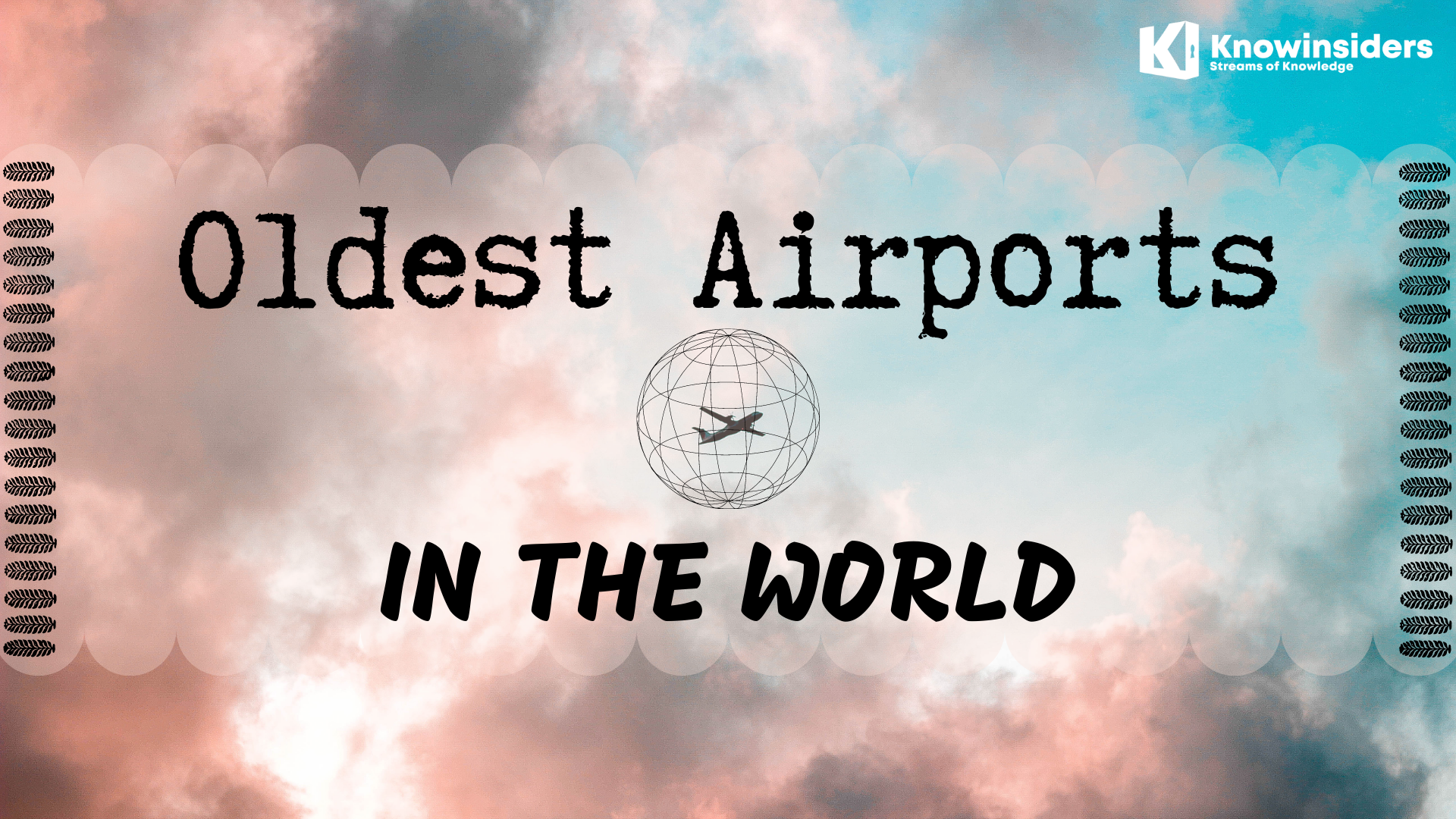 Top 9 Oldest Airports In The World Top 9 Oldest Airports In The World What are the oldest airports in the world? You may find much more interesting information with our list of top 9. |
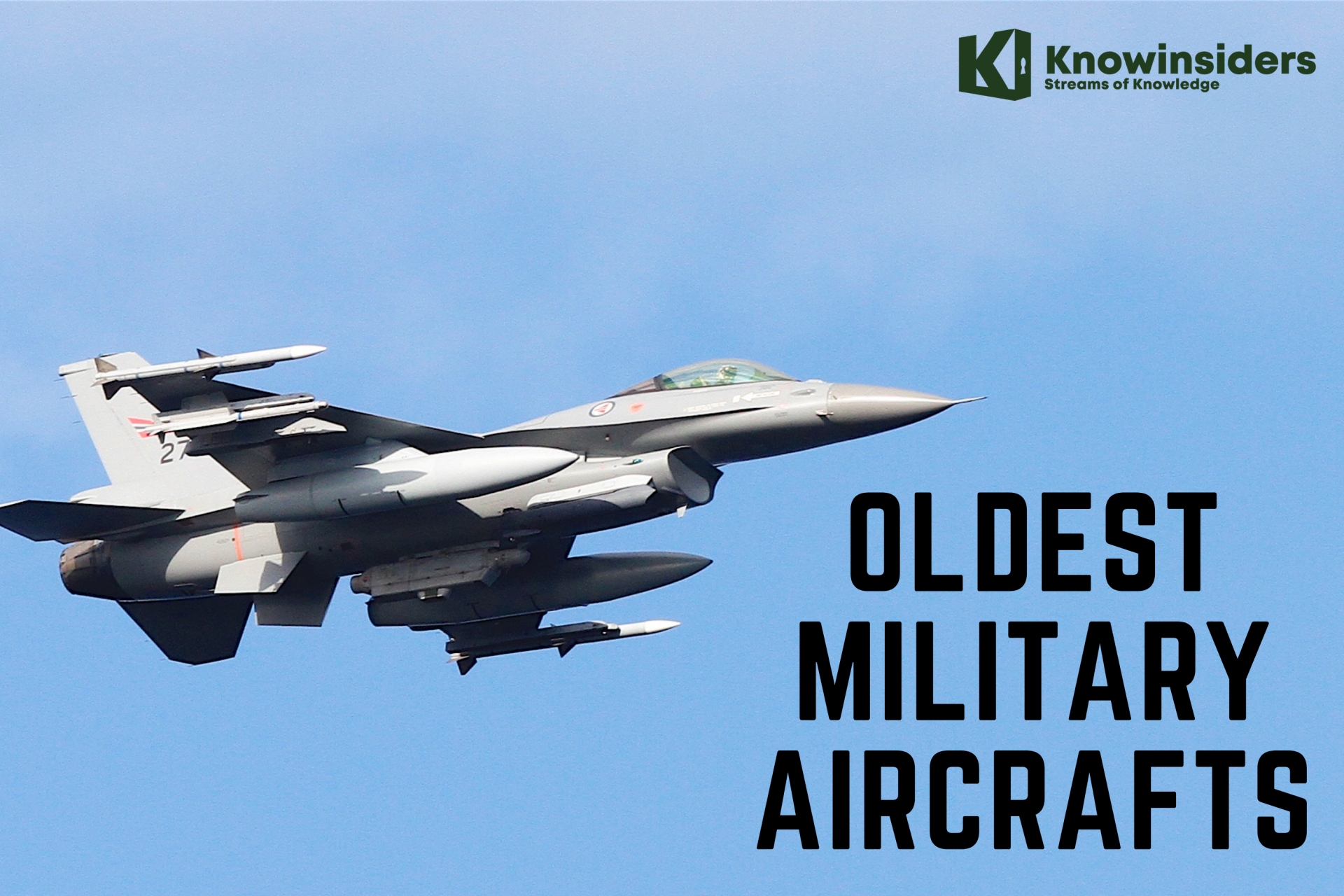 Top 10 Oldest Military Aircrafts In Service Top 10 Oldest Military Aircrafts In Service Check out a list of 10 oldest military aircrafts that have been in service for over half a century. |
 Top 8 World’s Oldest Airplanes Still In Operation Top 8 World’s Oldest Airplanes Still In Operation These planes, some over 100 years old, fly as testaments to their artistry and engineering. Check out top 8 oldest airplanes still flying in the ... |
 Top 9 Oldest Companies In The World Top 9 Oldest Companies In The World What’s your guess as to the age of the oldest business or company in the world? Which industry do you think it serves? Read on ... |


























